Following Breakfast we loaded the bus and headed out to Hoover Dam. Along the way Darrell showed a couple of documentaries about the Colorado River, John Wesley Powell, and the building of Hoover Dam.
Hoover Dam is located in what is known as Black Canyon. There’s a reason for that:
I commented to Darrell that I hadn’t expected to see so much lava in this part of the country. He explained that there is a current process at play (current being within the last 20,000 years) to “stretch” the North American Plate. One of the results of that has been an opening of a significant fissure that allowed massive amounts of lava to flow thru this region. Interesting. So anyway, Black Canyon – named for the lava rock in the area.
Arriving at the rafting company headquarters we transferred to their van for the trip down to the river. For some strange reason the people who run the dam are very touchy about security. Go figure. Anyway, arriving at the river we boarded our boat and headed out.
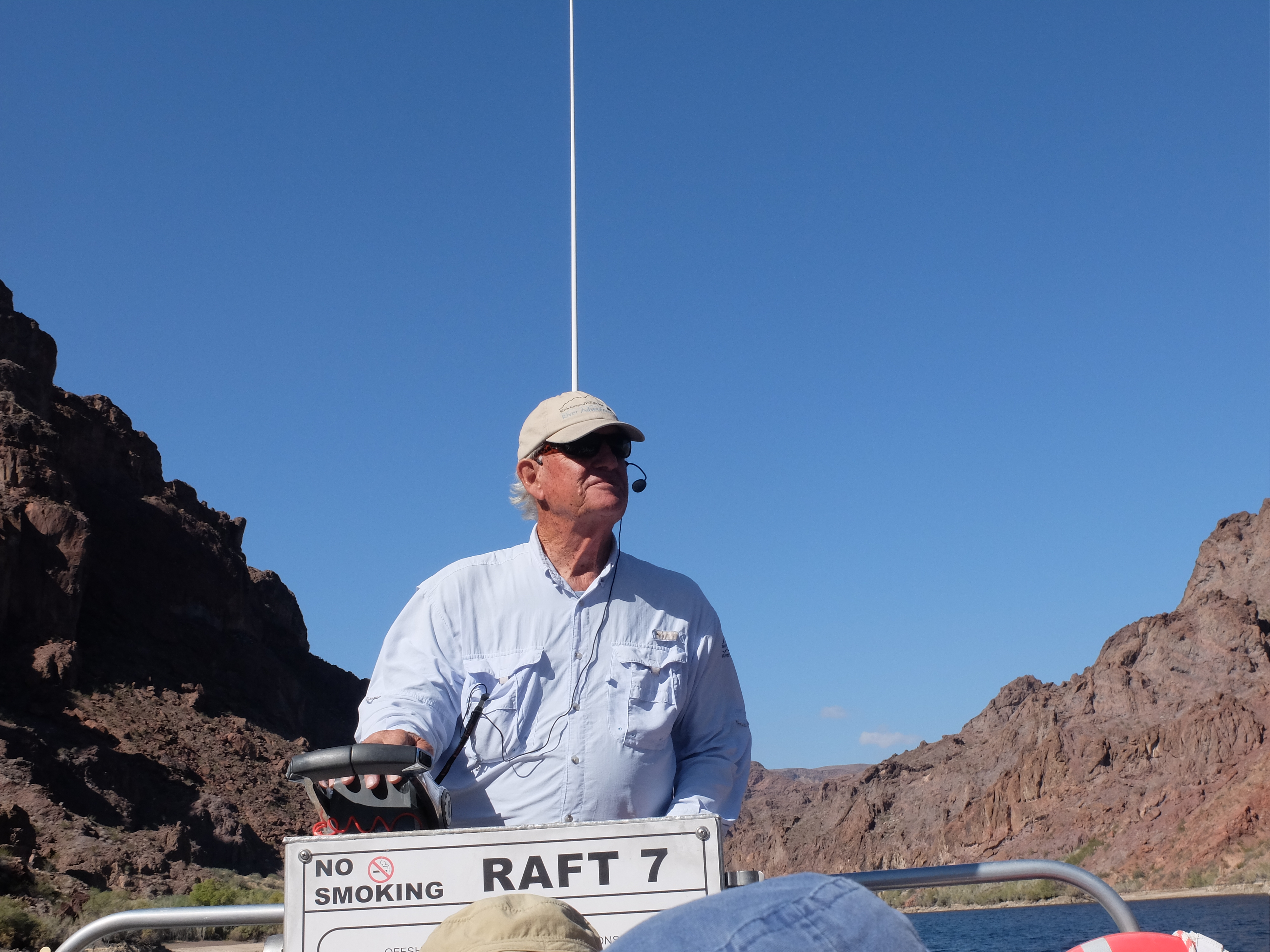
There were some marvelous sights
Brian also pointed out several hot springs locations along the way:
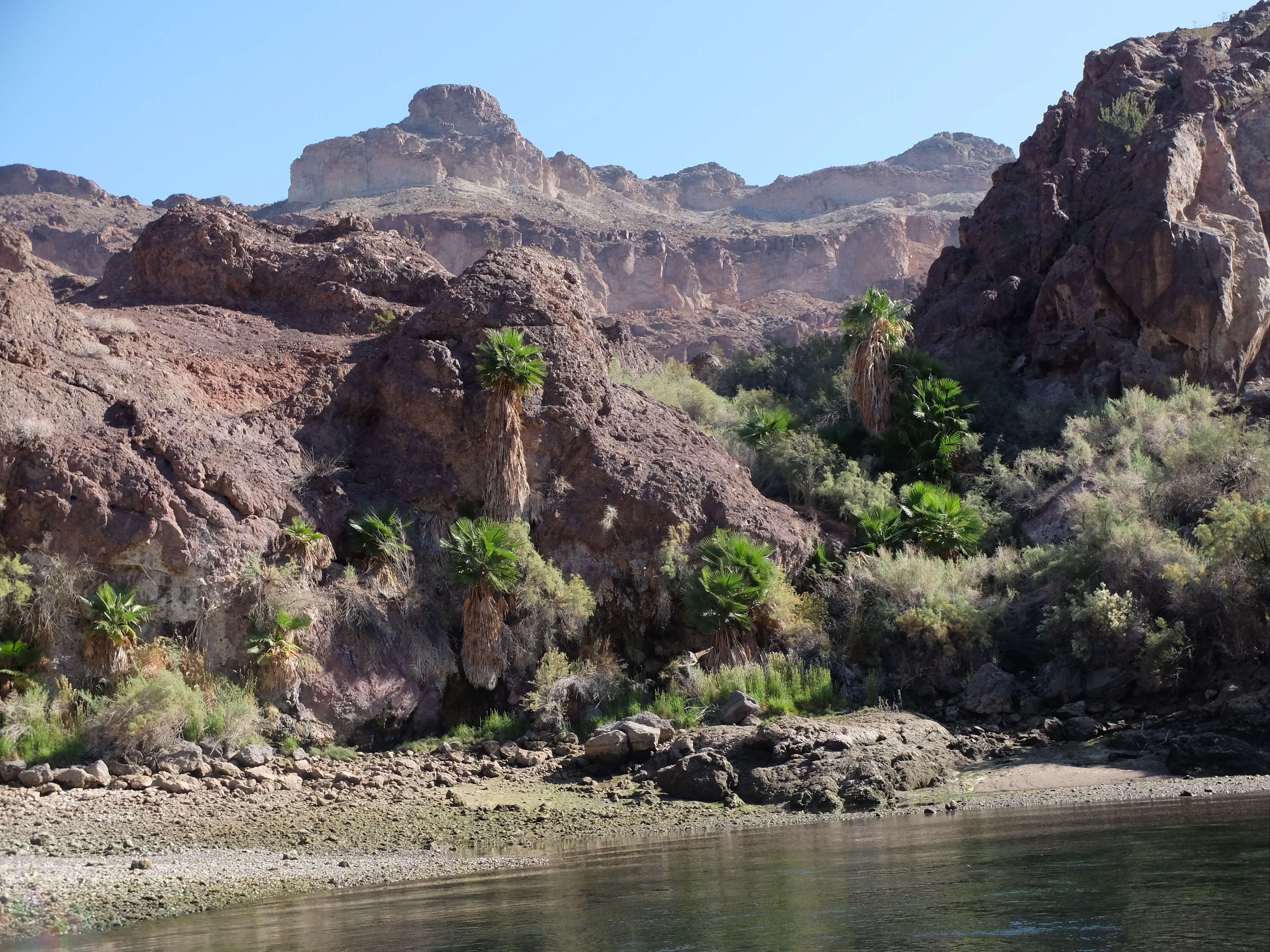
One of the functions performed by the Bureau of Reclamation is the monitoring of river conditions above and below the dam. Nowadays that is done electronically. In former times a person took the various measurements by hand. The placement of the “gageing stations” was determined by the best location along the river, not for the convenience of the employee. This resulted in some “interesting” commutes to work each day:
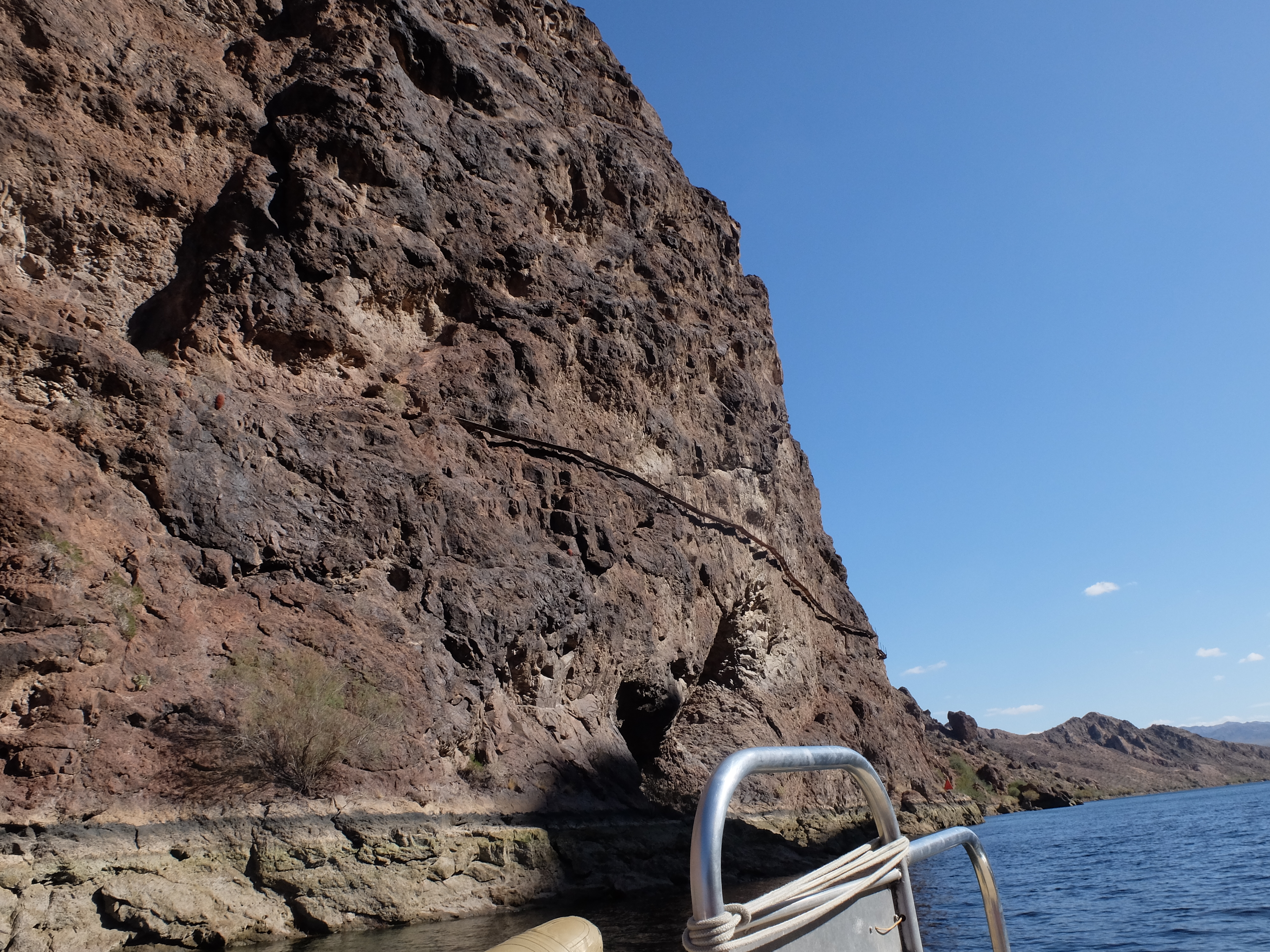
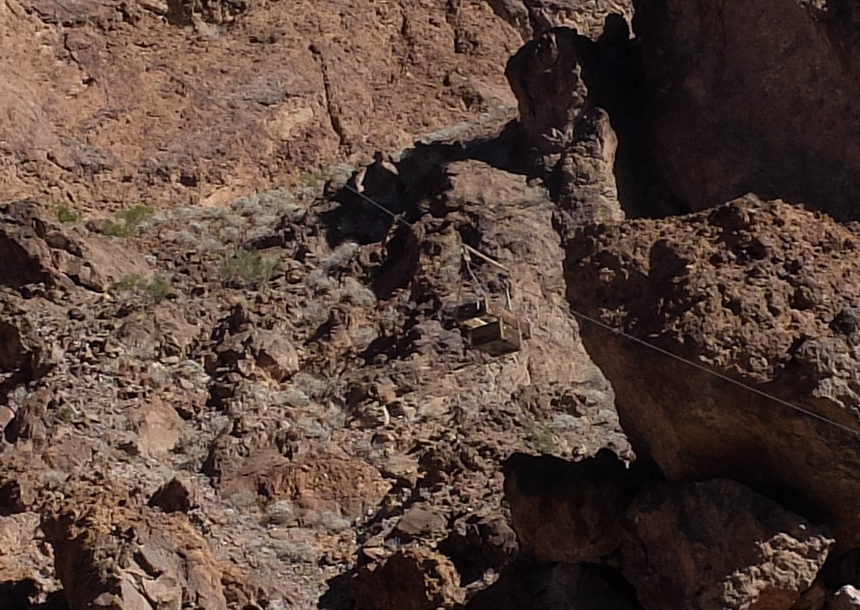
At a couple of points along the way Brian beached the boat so we could get out and stretch our legs (and take a picture of the boat).
Following the Raft Trip we returned to Hoover Dam to check out the visitors’ center.
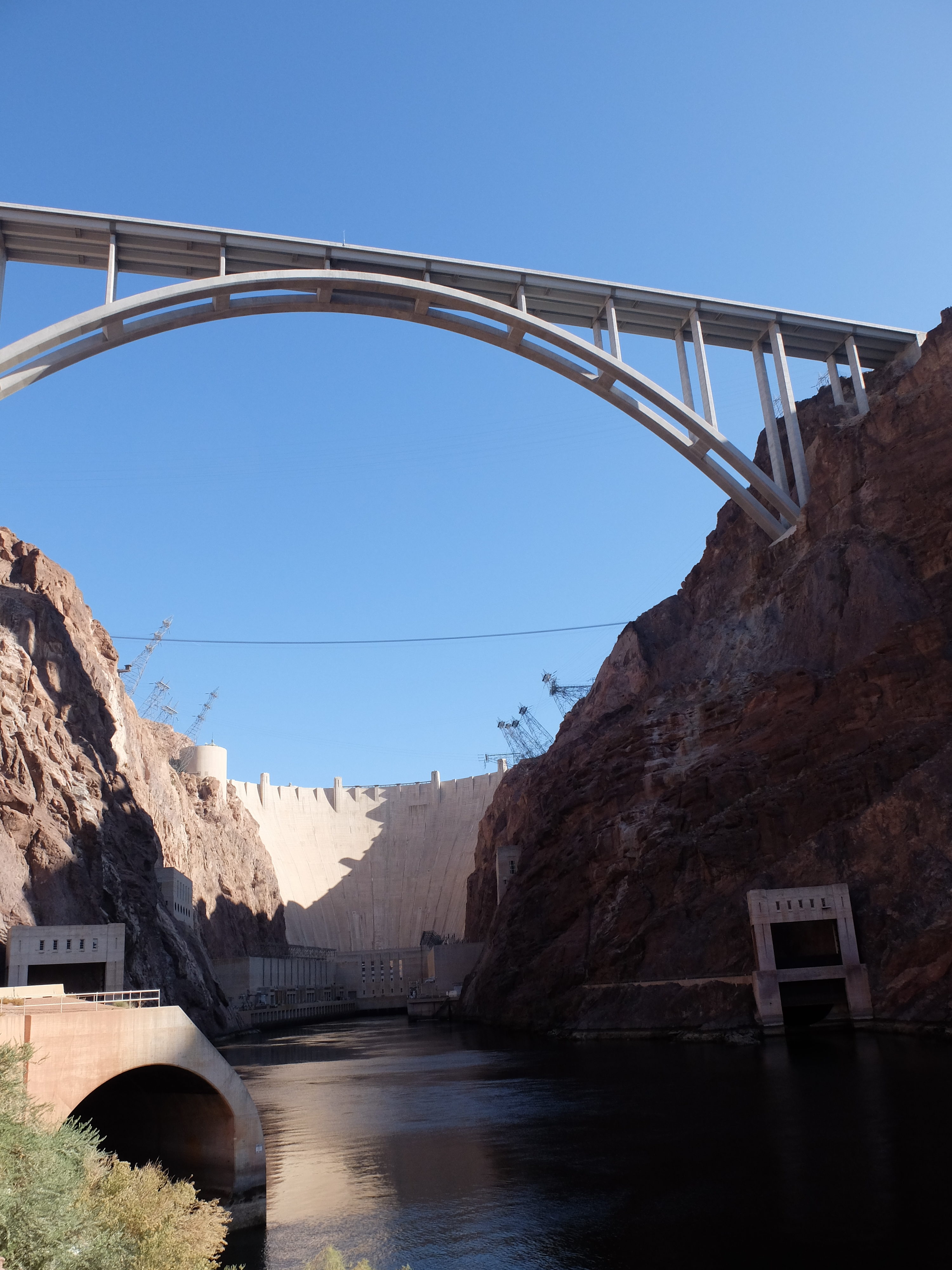

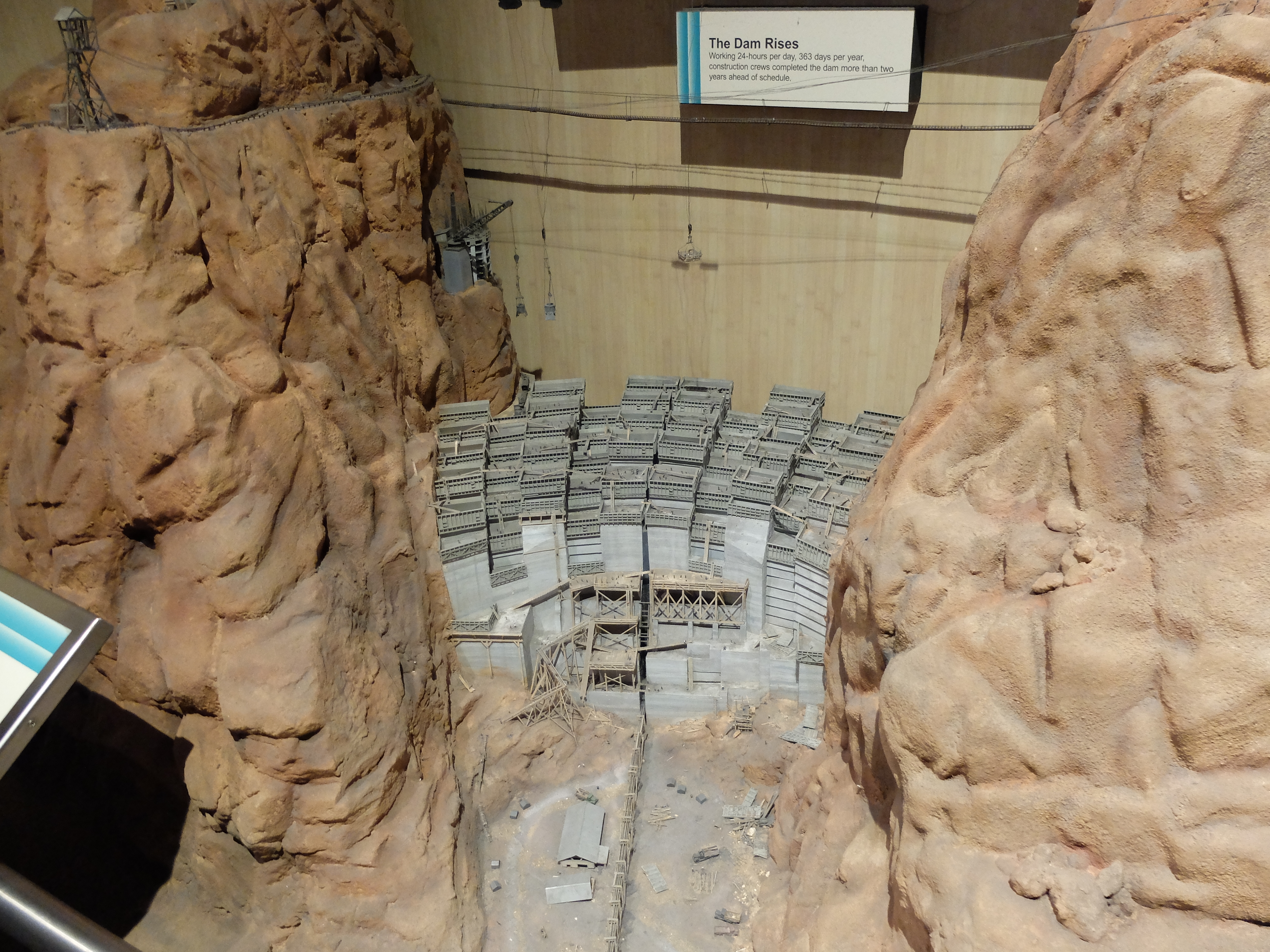
One of the big problems in construction was how to cure all that concrete without it cracking. The problem was solved by embedding copper pipe within the structure and running chilled water thru the pipe. According to Brian the concrete in the dam is still curing – 86 years later.
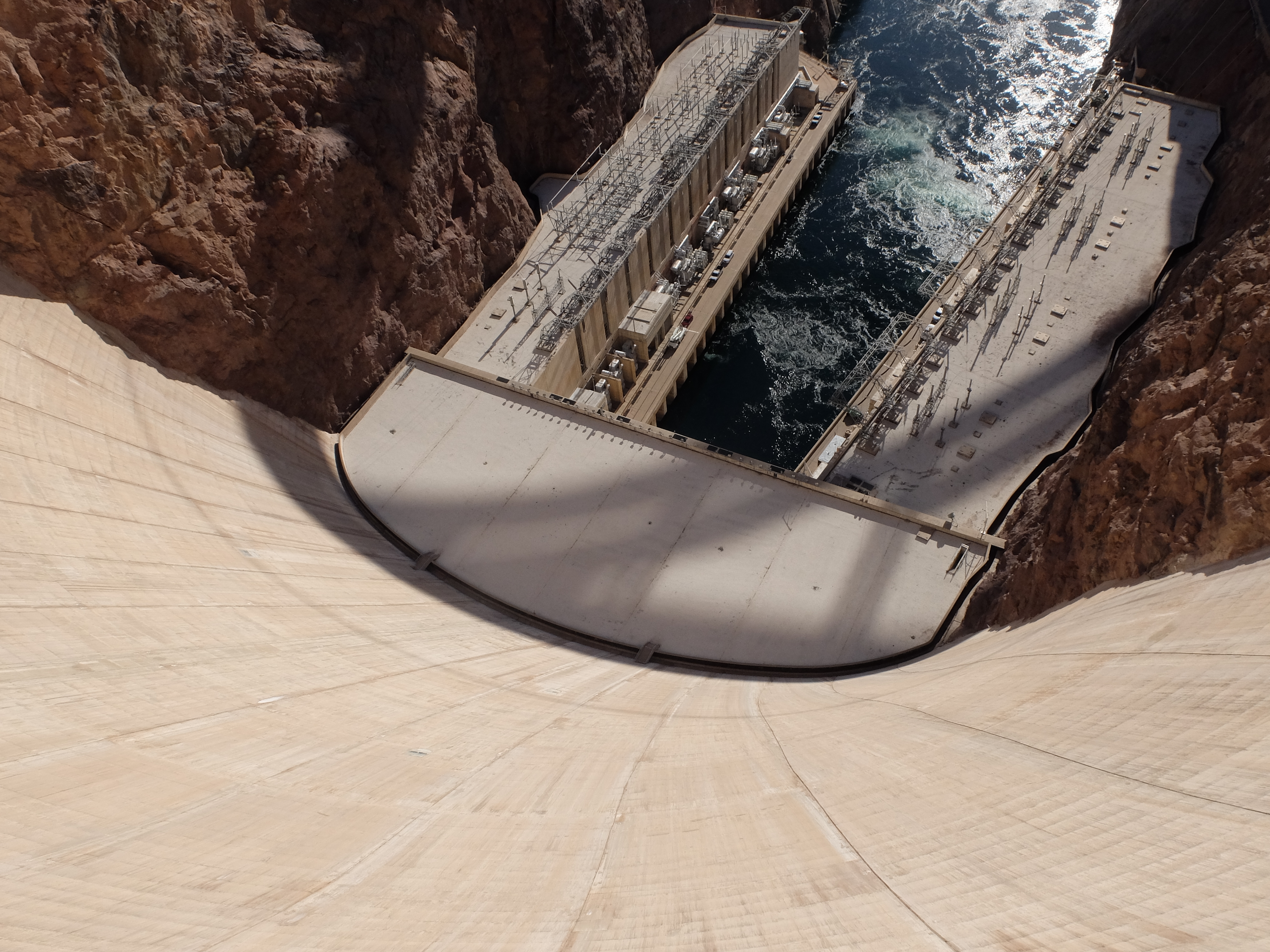
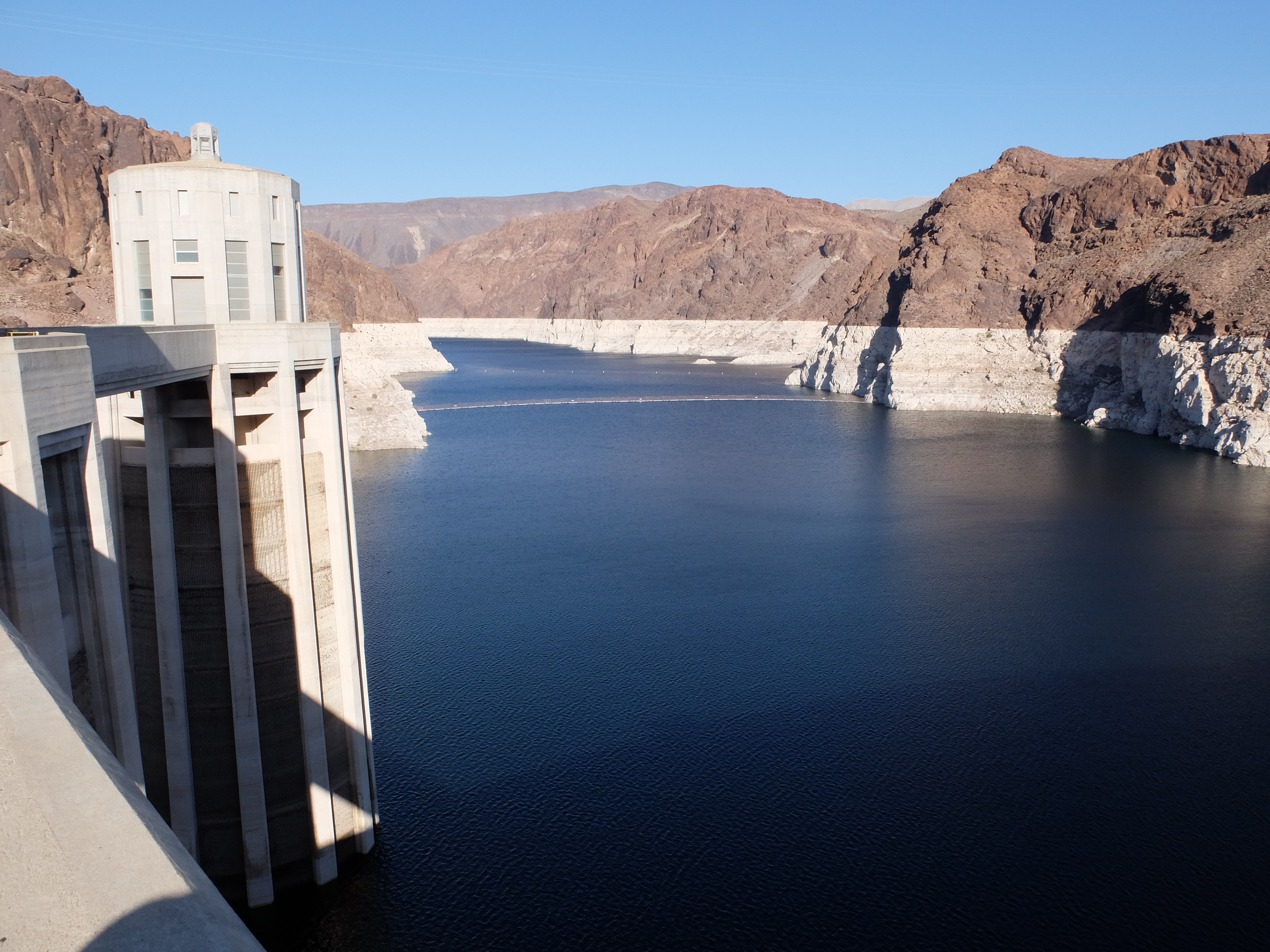
Then it was back on the bus and back to the hotel for a brief rest/read/blog before rebounding the bus to head downtown for dinner – this time to the Bahama Breeze Island Grill. Excellent Salmon, welcome Sangria (for me) and Long Island Ice Tea (for Cheryl), good company with another couple on the trip – a nice evening to cap off our stay in Las Vegas.
Tomorrow we leave bright and early to transfer to Death Valley. Things are about to warm up.
Till then, TTFN,
R
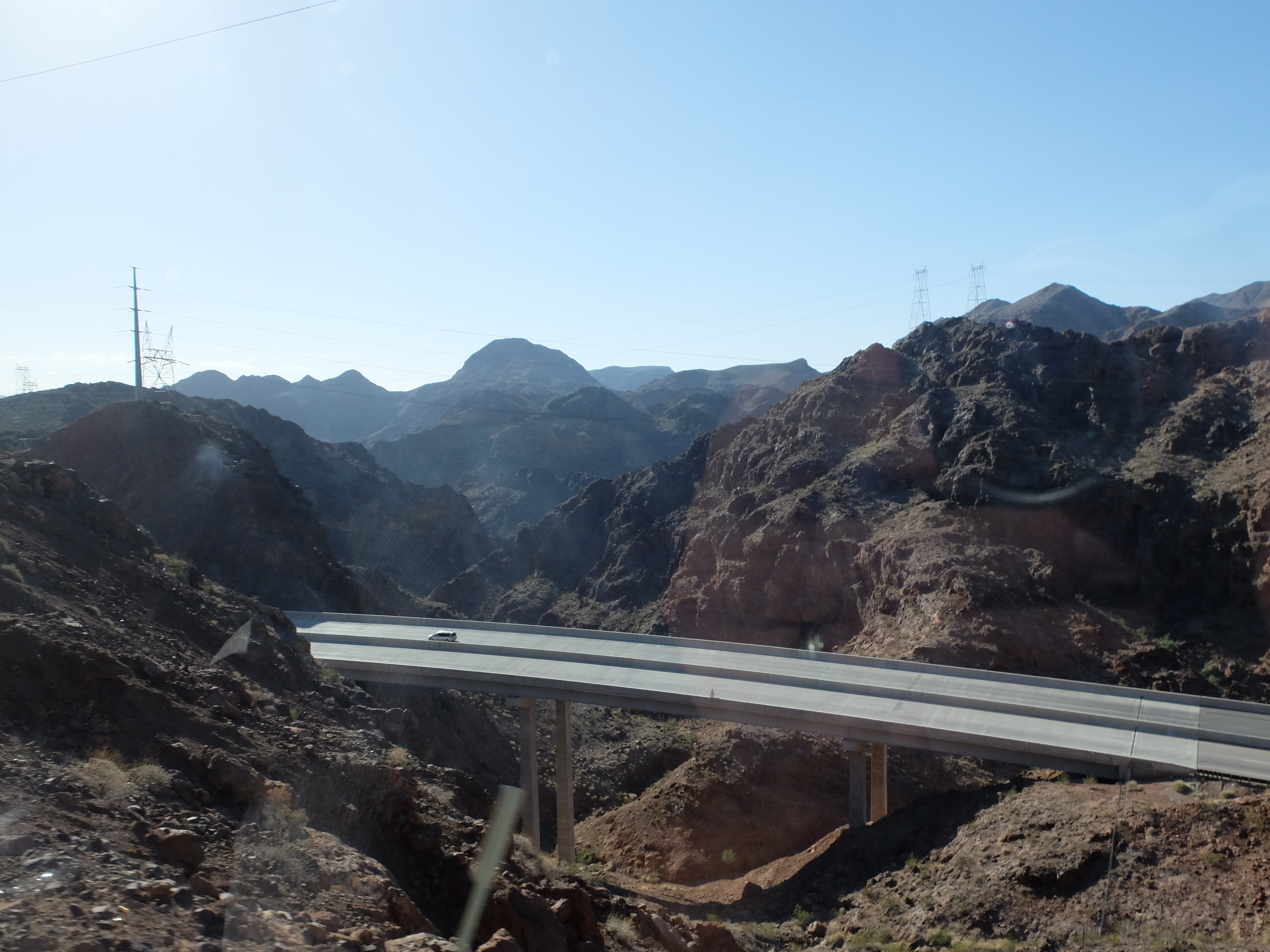
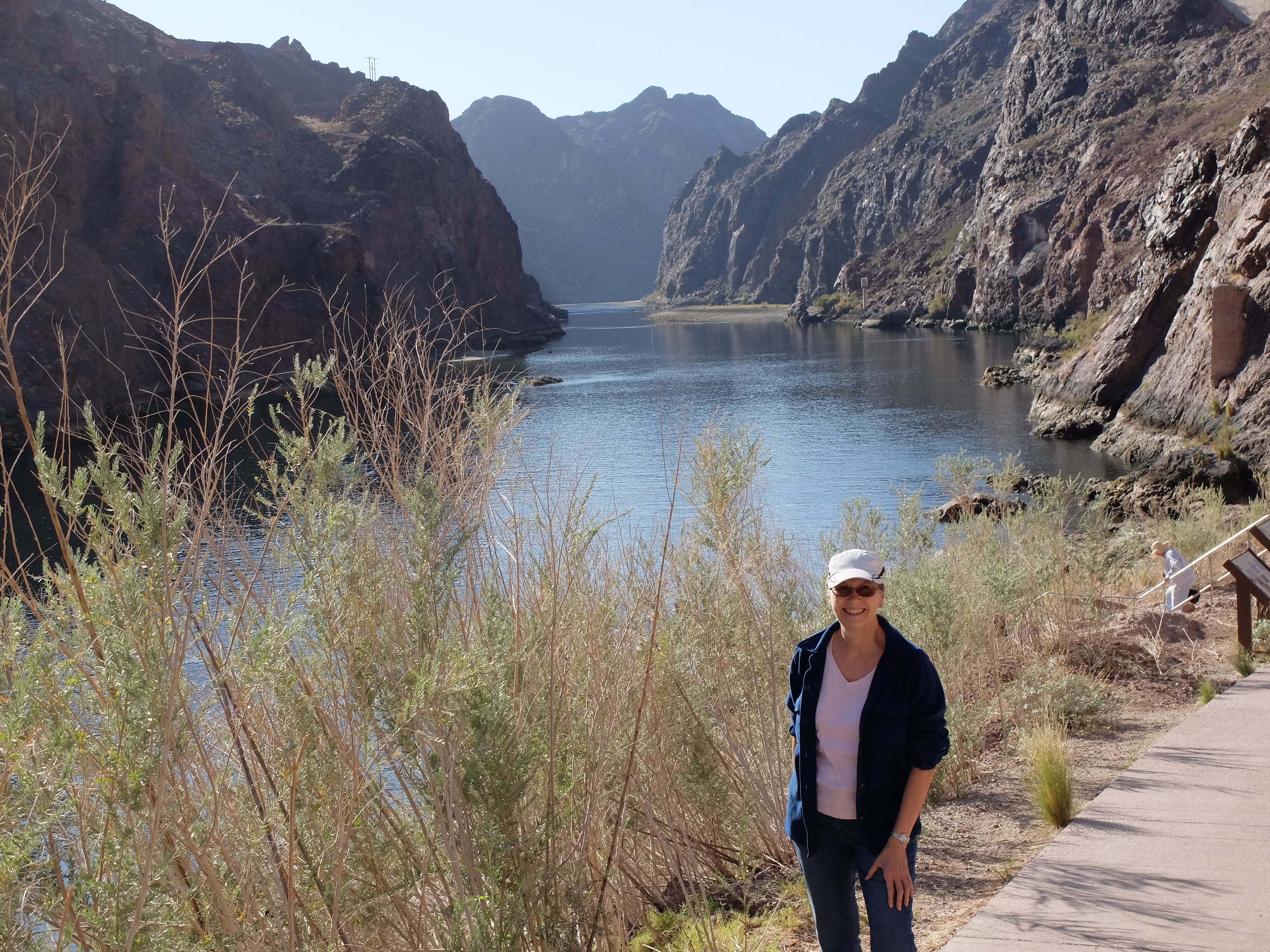
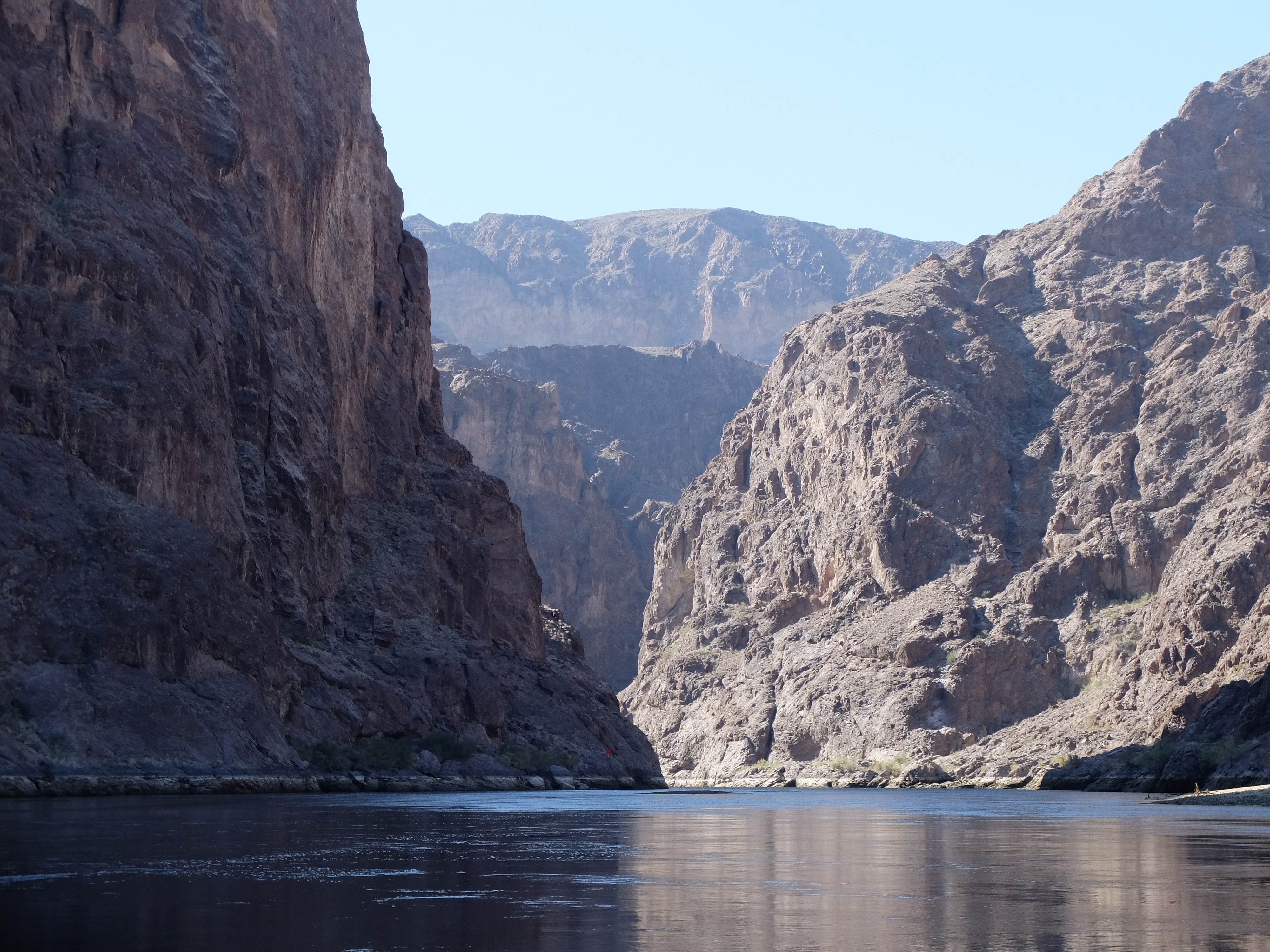
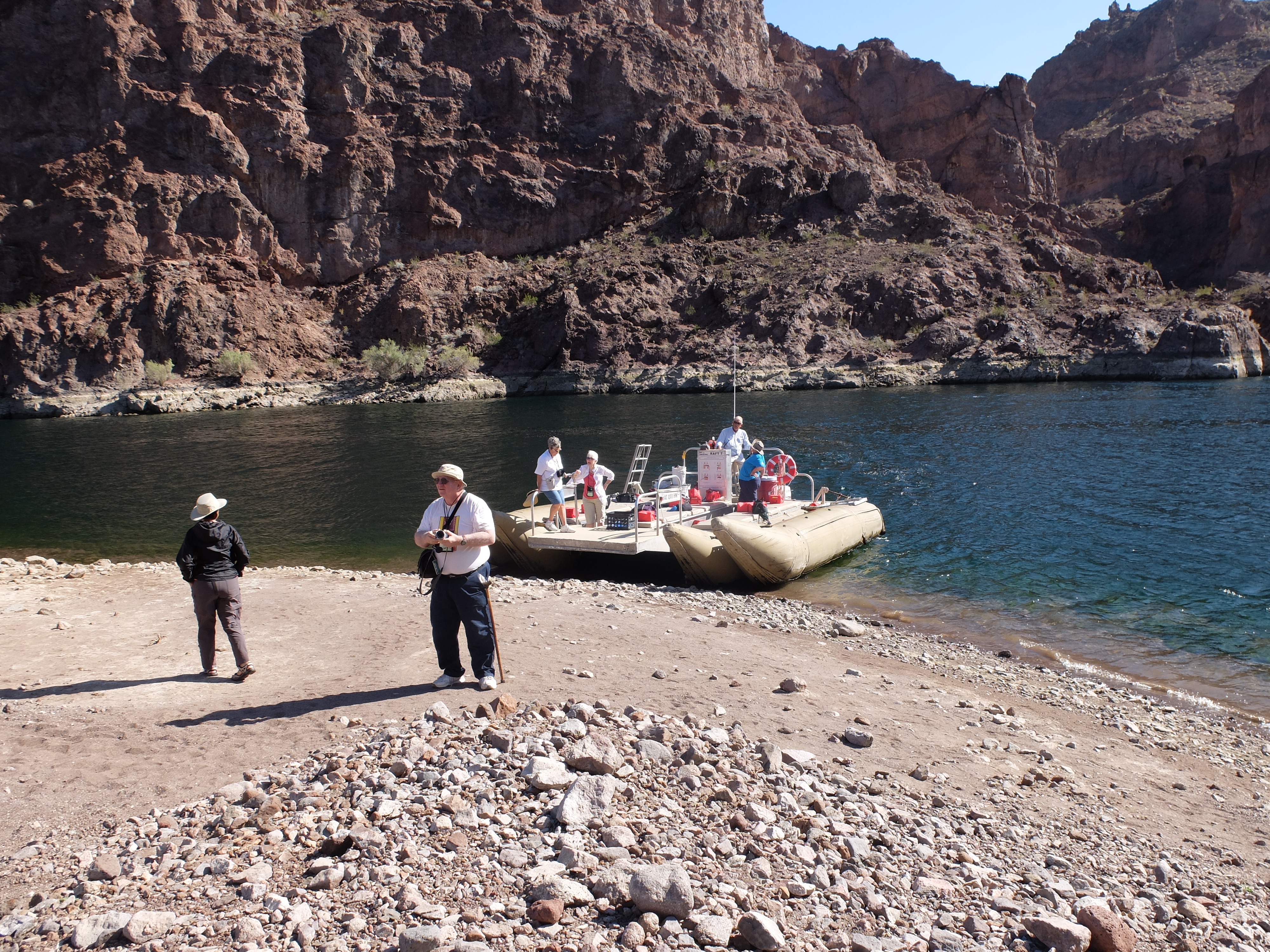
C – Hoover Dam was the most interest part of the day – a security guard came on the bus and checked all the storage bins. (During WWII there was a sniper positioned on the opposite bank in case anyone broke out onto the dam). We also individually had to empty all pockets and go through security screening before being allowed into the visitors center and onto the top of the dam. These pictures can’t convey how TALL this structure it – it must be the height of a 72 story building! VERY impressive! It took 22 years just to survey the various canyons and decide where to build it. Then they had to build roads down the sides of the canyon, build a cement plant, build supply depots for the copper pipes and other equipment, and build a city for all the workers before they could even start on the dam! The pay was terrible but this was one of the few paying jobs during the Great Depression. They had about 5,000 men working while 20,000 more camped out in tents out in the desert heat hoping someone would get injured or die so that the dam builders would need a replacement!
On the flat water float I found out that you don’t want to sit right up front on a boat with an engine because that is where all the spray hits as you cut through the water!